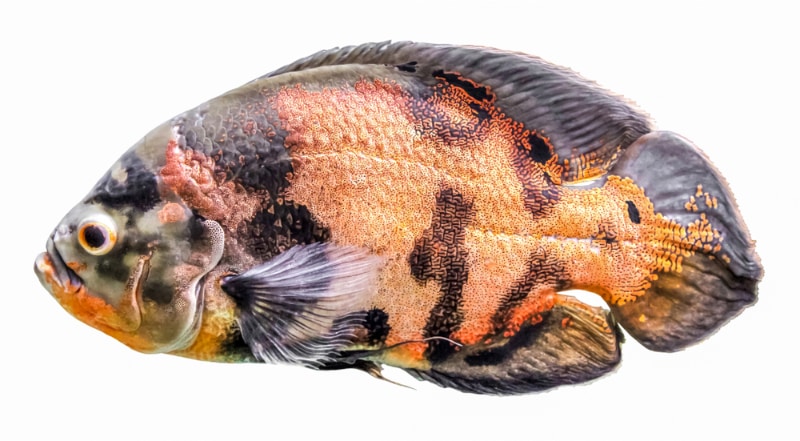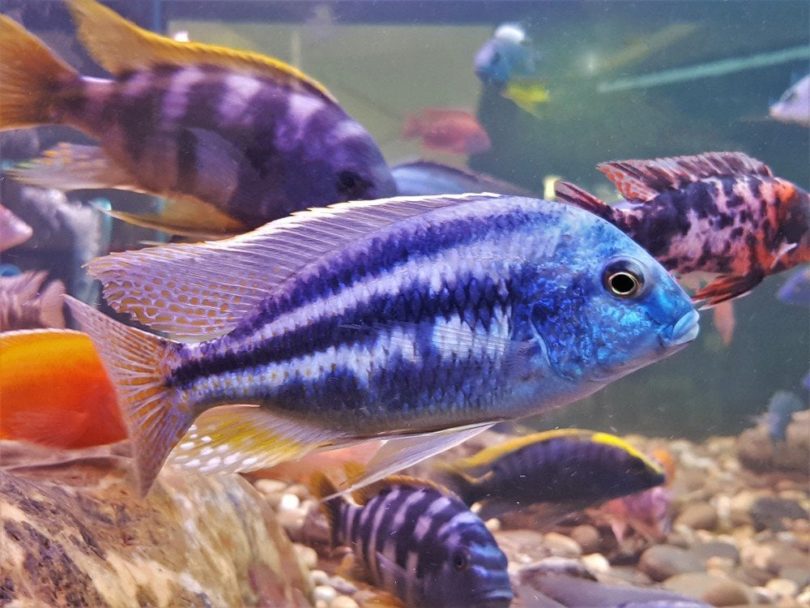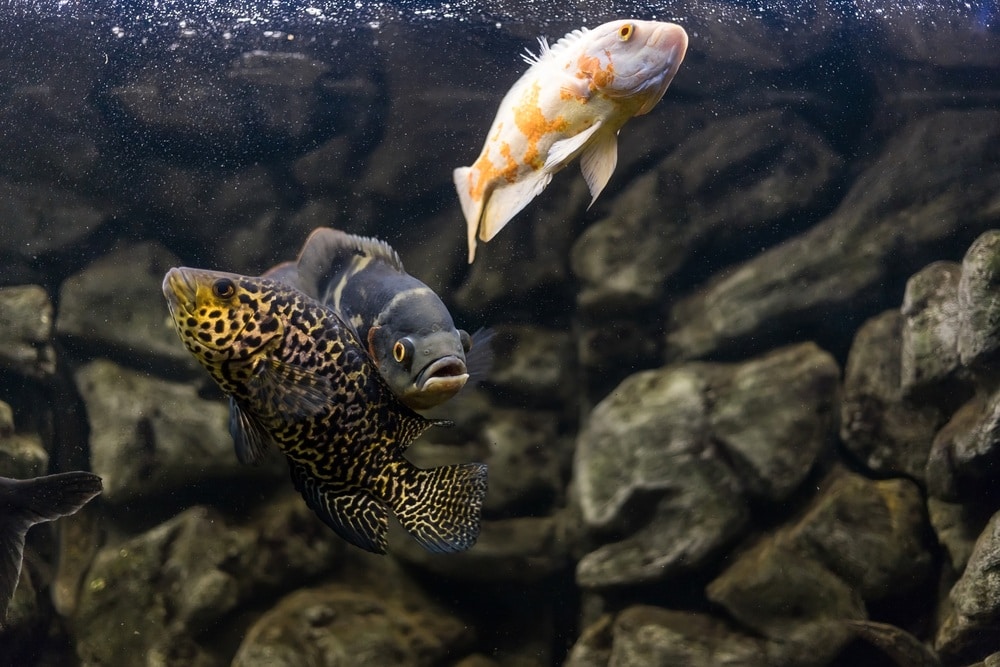Bloodfin Tetra: Pictures, Size, Care, Tank Setup, & More Vet-Approved Info
Updated on
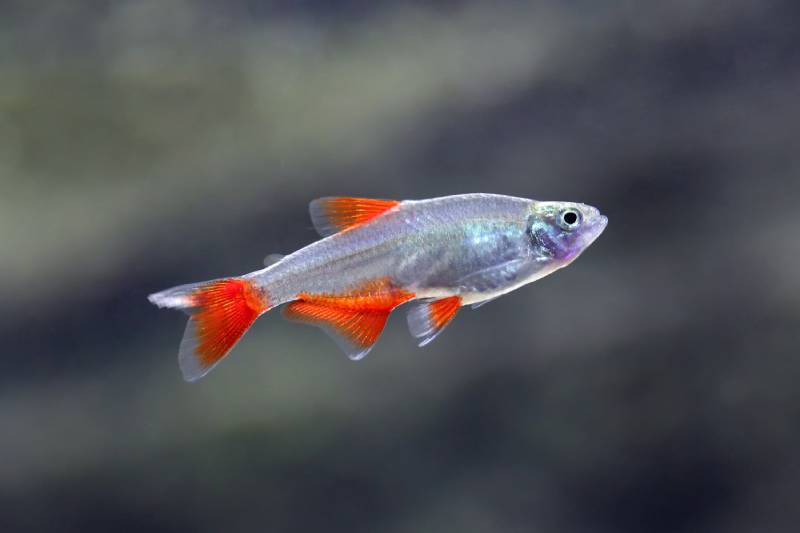
Click to Skip Ahead
The bloodfin tetra is a relatively large freshwater tetra from the Characidae family. They have a simple yet striking appearance with vibrant red fins and grow to just over 2 inches (5.5 centimeters) on average. Bloodfin tetras are peaceful and hardy fish that make great fish for beginners who are interested in caring for their first tetra fish. When provided with a spacious aquarium and kept in appropriately sized groups, bloodfin tetras can thrive and reportedly live for up to 8 years in captivity.
Quick Facts About Bloodfin Tetra
| Species Name: | Aphyocharax anisitsi |
| Family: | Characidae |
| Care Level: | Easy |
| Temperature: | 70°F to 80°F |
| Temperament: | 64–82 °F (18–28 °C) |
| Color Form: | Silver body, red fins |
| Lifespan: | 5 to 8 years (estimate) |
| Size: | 2+ inches |
| Diet: | Omnivore |
| Minimum Tank Size: | 15 gallons for a school of six to eight |
| Tank Set-Up: | Heated, freshwater, planted |
| Compatibility: | Other small peaceful fish |
Bloodfin Tetra Overview
Bloodfin tetras (Aphyocharax anisitsi) are freshwater tetras originating from the Paraná River basin in South America. There they inhabit the warm and slow-moving waters in the Paraná River basin and its tributaries. Their natural habitat consists of clear, slightly acidic streams with dense vegetation. When keeping bloodfin tetras in captivity, it is important to try and replicate their natural environment and water conditions. This not only allows them to display their natural behaviors but also allows them to thrive and remain healthy.
Bloodfin tetras will form large shoals in the wild as a defense mechanism, making it difficult for predators to single out an individual to attack. In the wild, bloodfin tetras will eat small crustaceans, worms, and even small insects and their larvae. They are active fish that prefer swimming around the middle and top parts of aquariums when kept together.

How Much Do Bloodfin Tetras Cost?
Regardless of where you get your bloodfin tetras from, they are considered inexpensive fish to purchase. Most bloodfin tetras cost between $2 to $5 per fish. However, since they need to be kept in groups, you might find that some local fish stores have a sale if you purchase more than one at a time. Furthermore, there aren’t different color forms of this fish that would cause them to vary in price.
Typical Behavior & Temperament
Bloodfin tetras are peaceful and highly social fish that are rarely aggressive. However, they may nip fish with long and flowy fins if they are kept in community aquariums. When bloodfin tetras are kept in groups of six or more, they are active and don’t hide away during the day. This will allow you to watch and enjoy watching your bloodfin tetras form a shoal and swim around the tank. Most bloodfin tetras will become more active during feeding time and will swim up to the surface of the tank in search of food.
When bloodfin tetras are kept alone or in small groups, they can be slightly shy and even stressed. This is why it is not recommended to keep bloodfin tetras alone or in too small groups.
Appearance & Varieties
Bloodfin tetras don’t offer much variety in terms of their appearance, and they have a small size and simple coloration. Bloodfin tetras grow to around 1.6 to 2 inches in size, but rarely any larger. Some well-bred bloodfin tetras may grow to around 2.2 inches in size, although this can take 1 or 2 years for them to achieve. Male bloodfin tetras are slightly smaller and slenderer than their female counterparts. Female bloodfin tetras usually have rounded bellies as they start to mature.
All bloodfin tetras have short fins framing their slender bodies that are a vivid red color. Their anal fins seem to have the reddest coloration and can sometimes have an orange tint. The rest of their bodies are a silverish-blue coloration that shimmers under bright lighting.
How to Take Care of Bloodfin Tetra
Habitat, Tank Conditions, & Setup
Bloodfin tetras are hardy and easy to care for which makes them ideal for both beginner and experienced fish keepers alike.
Tank Size
The minimum tank size for a group of six bloodfin tetras is 15 gallons. If you plan to keep your bloodfin tetras in a community tank, the size should be increased to give all the inhabitants enough space to live and swim comfortably. Bloodfin tetras should not be housed in small aquariums like bowls and vases.
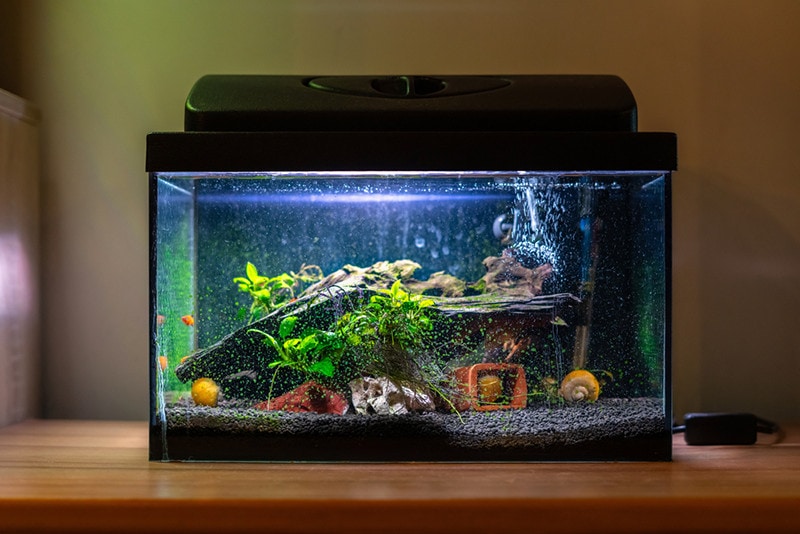
Water Quality & Conditions
Bloodfin tetras are more forgiving of small fluctuations in temperature and water quality issues, but they still require ideal water conditions to thrive. Since bloodfin tetras originate from warm waters in South America, their tank needs to be equipped with an aquarium heater. The heater should be set to a temperature between 64–82 °F (18–28 °C ). In terms of the water pH, it should be a constant value between 5.5 and 7.5. Bloodfin tetras should only be kept in cycled aquariums with an ammonia and nitrite reading of 0 ppm.
Substrate
The bloodfin tetra is not picky about the substrate in their aquarium. However, darker gravel or sandy substrates are recommended for these fish. The darker substrate will allow your bloodfin tetras to stand out.
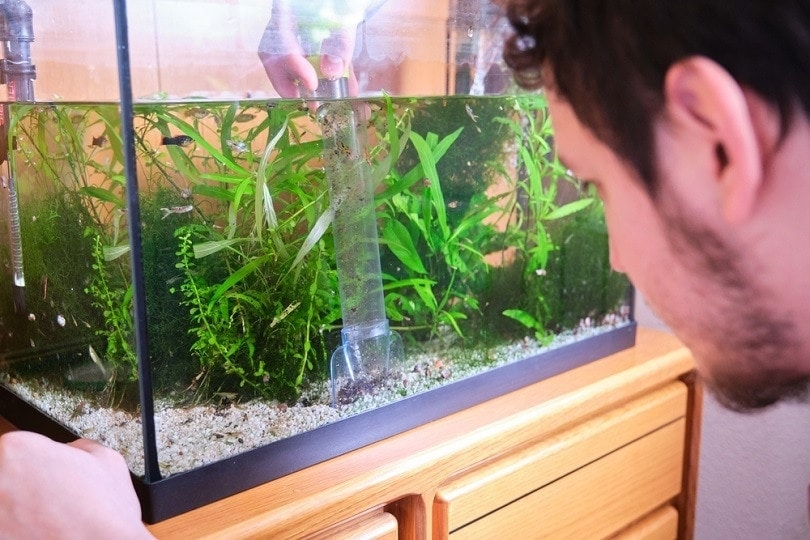
Plants
Live plants are both recommended and beneficial for bloodfin tetras. They provide shelter for them and create a natural environment like the one they would experience in the wild. Plants like java moss, amazon swords, and anubias are some favorites.
Lighting
Bloodfin tetras require light during the day to replicate a day and night cycle. They can tolerate low to moderate lighting that is kept on for 6 to 10 hours during the day, along with complete darkness at night. Lighting is especially important for any live plants you have growing in the tank.
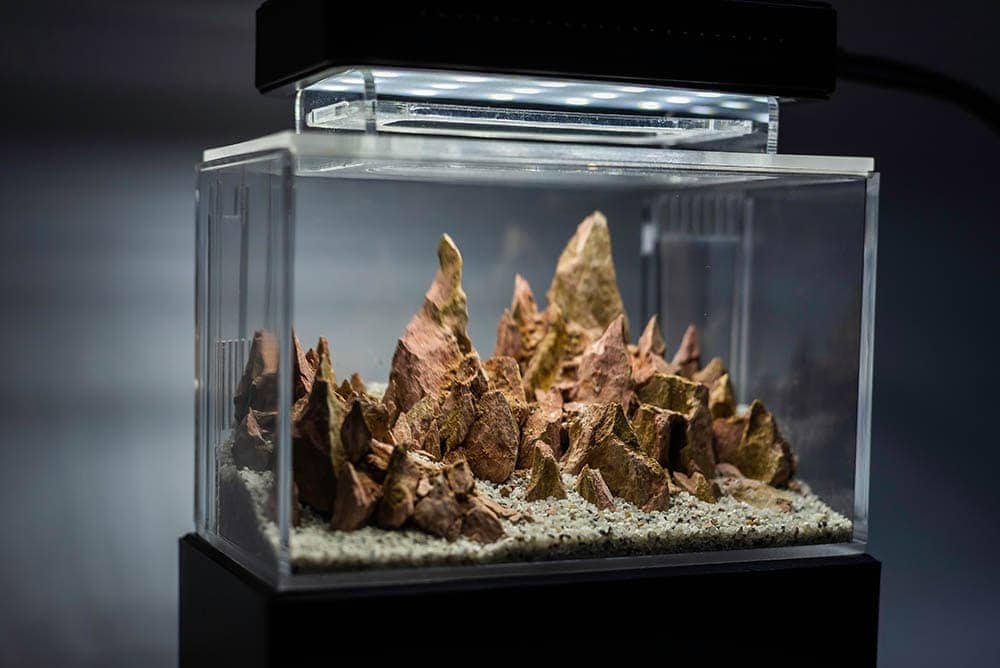
Filtration
A bloodfin tetra tank should always have a filter running. The filter will prevent the water from becoming stagnant while ensuring that the waste in the tank can be processed properly. They don’t need a filter with a strong flow, so sponge and nano filters can work fine.
Are Bloodfin Tetra Good Tank Mates?
The bloodfin tetras’ peaceful temperament makes them good tank mates for other tetras and similar-sized fish. They are small and non-aggressive and can be kept with tank mates that require similar water conditions. This means that any tank mates you choose to house with your Bloodfin tetras should be peaceful, tropical, and small freshwater fish. Some popular bloodfin tetra tank mates include neon tetras, cardinal tetras, mollies, and platies. Bloodfin tetras can also be kept with invertebrates like some snails and shrimp.
You generally want to avoid keeping them with fish that have long fins since bloodfin tetras may nip them. Goldfish, Bettas, and cichlids are not considered good tank mates for bloodfin tetras since they are much larger fish with different living conditions and requirements.
What to Feed Your Bloodfin Tetra
Bloodfin tetras are naturally omnivorous, and their diet should consist of plant and animal-based foods. However, wild bloodfin tetras lean towards eating more of a carnivorous diet. In captivity, bloodfin tetras should eat an omnivorous diet consisting of pellets, live foods, and supplements. A good quality pellet food formulated for tetras is recommended as their staple diet.
The pellets should be a micro or small size since bloodfin tetras may have difficulty eating larger foods. Live or frozen foods like bloodworms, baby brine shrimp, and micro worms provide your bloodfin tetras with extra protein for growth and enhanced coloration. Supplements such as spirulina algae powder can also be included in your bloodfin tetras diet.
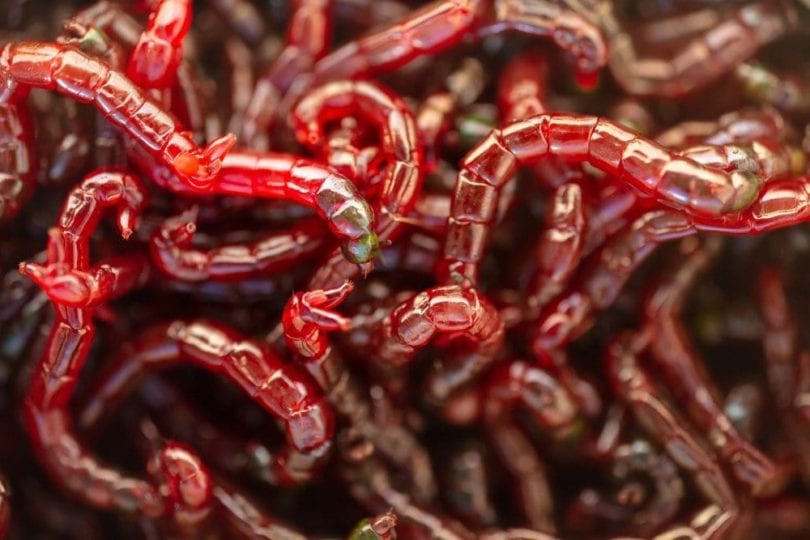
Keeping Your Bloodfin Tetra Healthy
It is relatively easy to keep your bloodfin tetras healthy in an aquarium. Most of their needs can be easily met by beginner fish keepers. A spacious and heated freshwater aquarium above 15 gallons in size is a great way to provide your bloodfin tetra with a comfortable living environment. It is important to maintain the water quality and do weekly partial water changes to dilute any waste in the water.
Although bloodfin tetras are forgiving about slight changes in the water temperature, an aquarium heater is still required. The temperature should be set to a constant value between 64–82 °F (18–28 °C) with few sudden fluctuations in temperature. You want to avoid drastically lowering or increasing the temperature since this could put your bloodfin tetras in shock.
If you plan to raise bloodfin tetras in a community aquarium, it’s important to upgrade the size of the tank to accommodate each species of fish. Lastly, ensuring that your bloodfin tetras are fed a healthy and balanced diet is important. Bloodfin tetras should eat small portions of food once or twice a day. Any supplements and live foods don’t have to be fed every day, and two to three times a week will suffice for healthy adult fish.
Breeding
Bloodfin tetras are easy to breed in aquariums and usually breed on their own time. Most bloodfin tetra breeders don’t have to create a whole new breeding tank for these tetras. When provided with ideal water conditions with few stressors in their environment, bloodfin tetras will begin to breed.
They are ready to breed at 6 to 9 months old, although most only begin to breed after a year. Since bloodfin tetras should be kept in groups, a group with more females than males can make the breeding process less stressful. Female bloodfin tetras will deposit eggs around the aquarium, usually over plants and the substrate. You do have the option of moving the eggs into a separate aquarium, as the adults are not opposed to eating the eggs.
The eggs will hatch in 1–3 days, and the fry will be incredibly small during the first few weeks of their lives. It is important to provide the fry with plenty of hiding places like netting and bushy or mossy plants. The fry can be fed infusoria or baby brine shrimp.
Are Bloodfin Tetras Suitable for Your Aquarium?
Bloodfin tetras make fascinating additions to tropical, freshwater aquariums. They can be introduced to community aquariums if the other fish are small and peaceful. Bloodfin tetras will thrive in a heated fish tank larger than 15 gallons for a group of six or more. Their tank may appear better if it contains a dark gravel or sand substrate with live or silk plants, rocks, and driftwood to create a natural environment.
Bloodfin tetras need both a heater and a filter to stay healthy, but the filter shouldn’t create a strong current. The filter also shouldn’t have large openings by the intake, since bloodfin tetras may get sucked into it. Once the aquarium is suitable for a bloodfin tetra, you also want to ensure that you can keep them together in groups and feed them a species-appropriate diet daily.
Featured Image Credit: Grigorii Pisotsckii, Shutterstock




